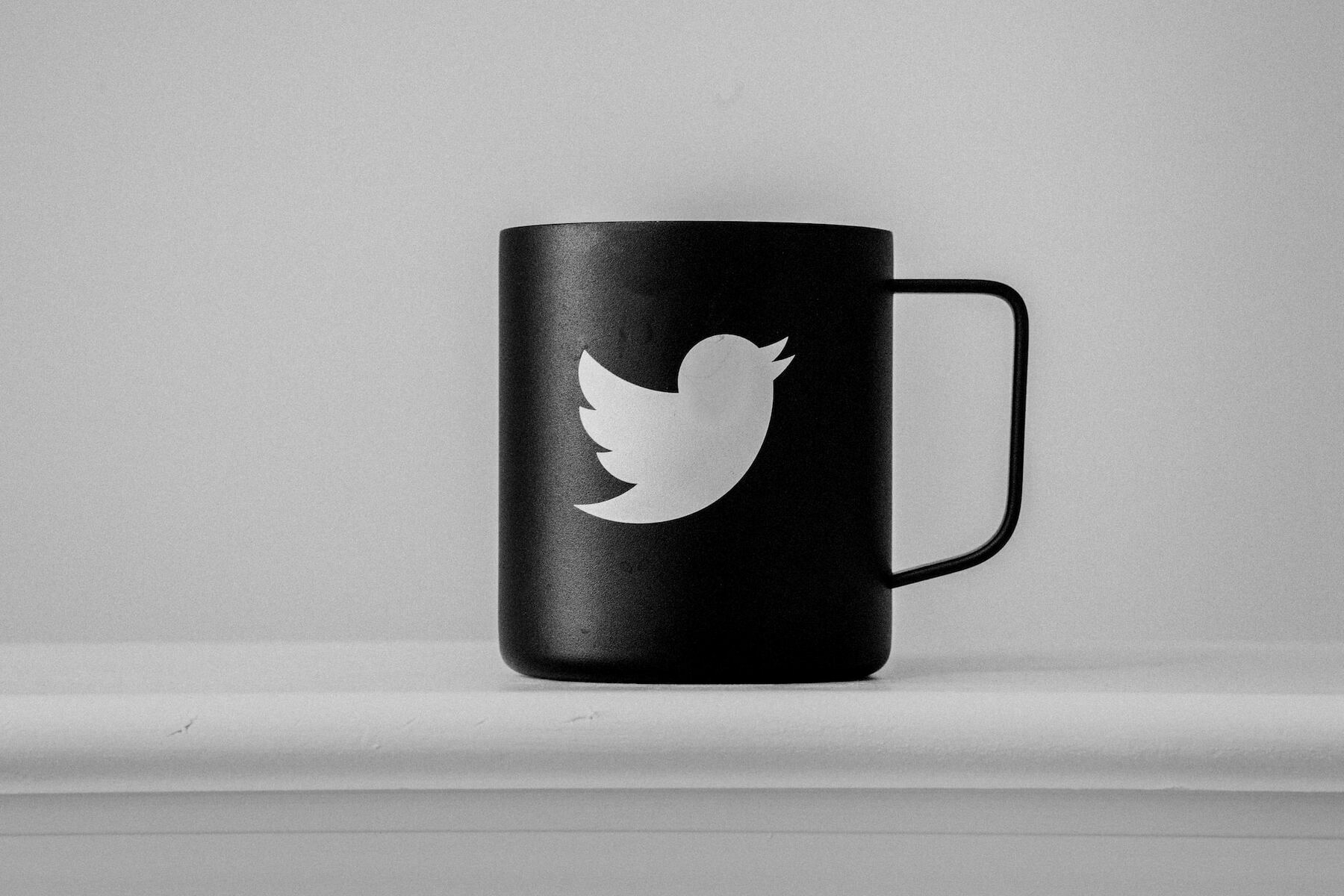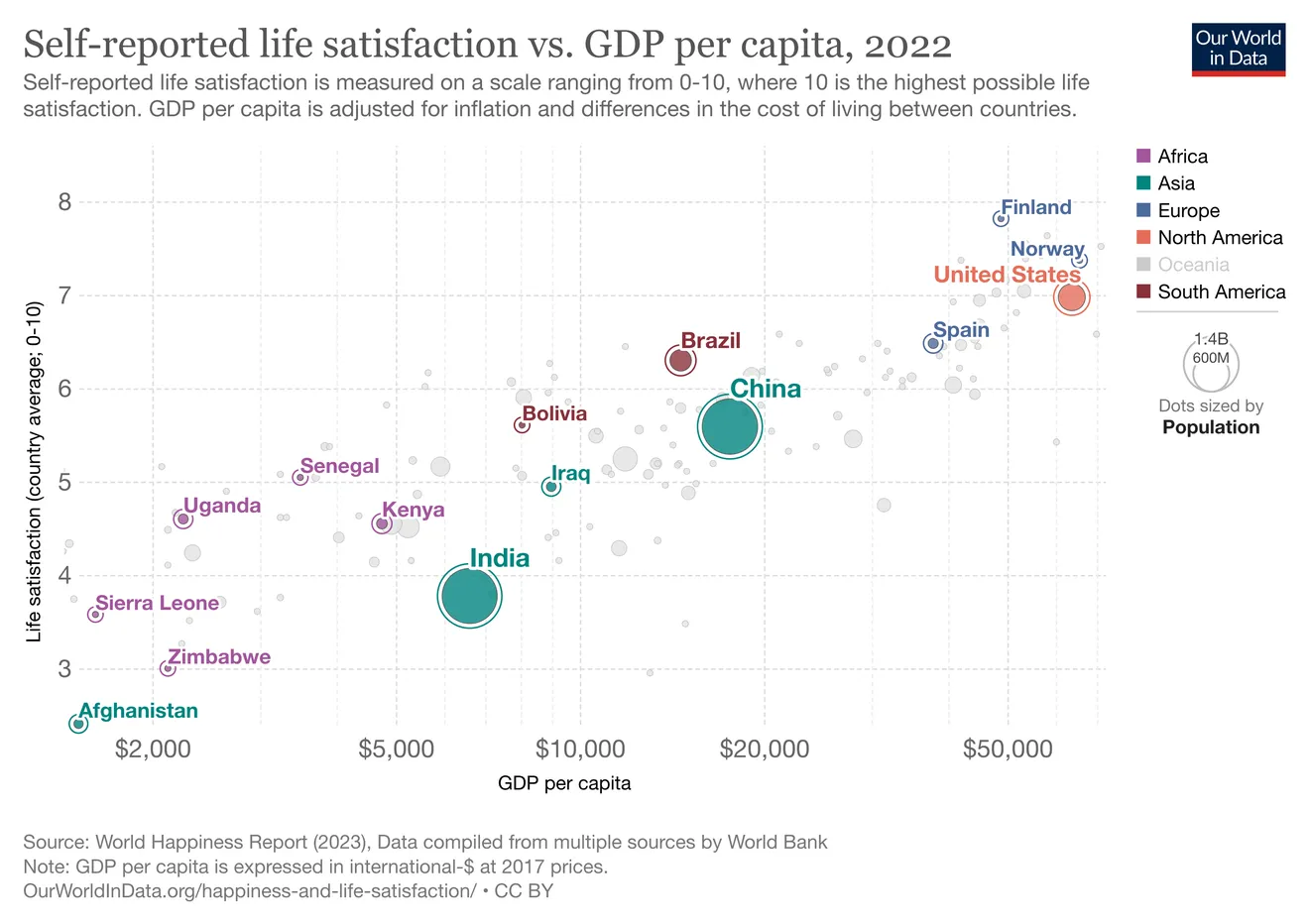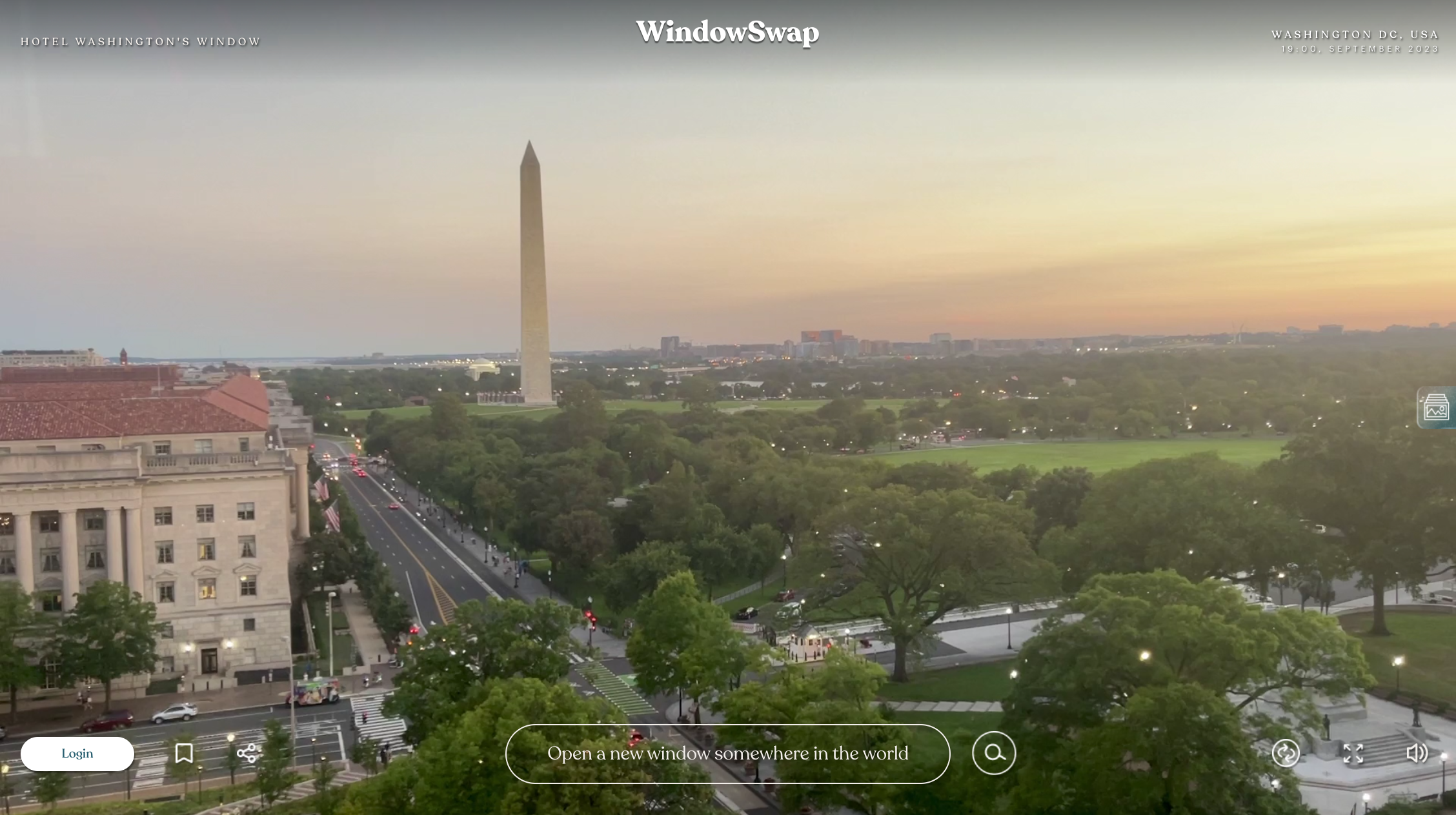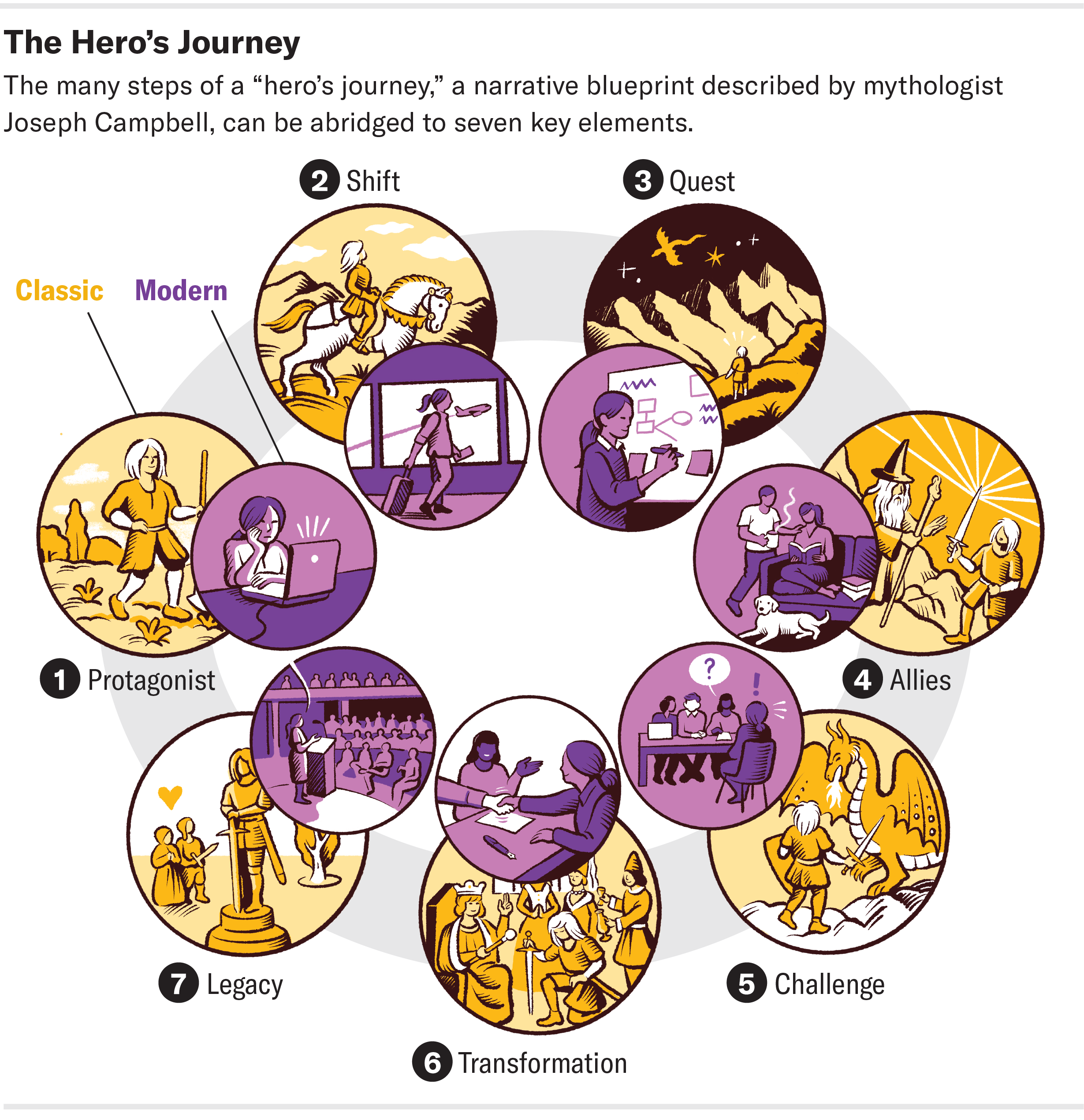Small sufferings
As I’ve mentioned sporadically for over a decade, I have a cold shower every morning. Not only is it good for mental health, but it’s a way of adding a small bit of suffering into my life.
That might sound like an odd thing to do, but study after study shows that it’s the difference between our experiences that provide pleasure or pain. Humans can adapt to anything, and I believe my days are better by starting them off with a small amount of suffering.
This post riffs on that idea, and as someone who’s no stranger to wild camping in the snow, I can definitely attest to daily cold showers being more effective than one-off trips for building resilience!

I suspect that small sufferings spread out across time are more helpful; that, for example, a 10 minute cold shower each day would make me feel more total gratitude for my cozy life than a one-week cold camping trip once per year – life is long and memory is short, so the cold trip would probably fade from memory after a week or two. But it's strangely hard to force myself to suffer, even if it's for my own good.Source: Optimal Suffering
Image: Unsplash
Twitter now feels like the Brewster’s Millions of tech
I’d like to share two ‘leaving Twitter’ posts I came across yesterday. Theyoccupy somewhat opposite ends of the spectrum in terms of reasons for the decision. One is cold and rational, as befits an analyst like Benedict Evans. The other is more passionate and emotional, as you’d expect from someone like Douglas Rushkoff.

Let’s take Evans first, who writes:
...The last year swapped stasis for chaos. Stuff breaks at random and you don’t know if it’s a bug or a decision. The advertisers have fled, and no-one knows what will be broken by accident or on purpose tomorrow. The example that’s closest to home for me was that the in-house newsletter product was shut down - and then links to other newsletters were banned. Pick one! It’s hard to see anyone who depends on having a long-term platform investing in anything that Twitter builds, when it might not be there tomorrow.I couldn’t really care less about Twitter’s business model, although I did see the writing on the wall in 2014 when I wrote about what I call ‘software with shareholders’. So poor platform decisions don’t really move me.There are various diagnoses for this. Tesla has sometimes been run in chaos as well, but the pain of that is on the employees, not the customers: you can’t wake up in the middle of the night and decide the car should have five wheels and ship that the next day, but you can make those kinds of decisions in software, and Elon Musk does, all the time. Perhaps it’s a fundamental failure to understand how you run a community. Or something else. But whatever the explanation, Twitter now feels like the Brewster’s Millions of tech - ‘Watch One Man Turn $40bn Into $4 In 24 Months!’
What I am concerned about is reputational damage. Which is why our co-op’s Twitter/X account has been mothballed and will be deleted in January 2024. Being associated with a toxic brand is never a good idea.
So let’s move onto Rushkoff, who starts writing about Twitter/X but ends up (perhaps unhelpfully) generalising:
The uniquely destabilizing aspect of these platforms is that there’s no friction. There are no moderating influences. It’s a bit like running on ice. You go in a certain direction, and then you can’t stop. You just keep sliding in that direction. That’s what happens with social media. There’s no friction, no moderation, no balance. Every idea ends up rushing sliding towards its absolute conclusion immediately. So ideas in progress, things that maybe could be considered together — they end up just going to their logical extremes.I think Rushkoff makes a great point about “ideas in progress”. It used to be the case, before everyone arrived on social media, that you could share things that were unfinished, works in progress, half-baked ideas. These days, people are held to account for things they’ve posted over a decade earlier, as if people don’t learn and grow.[…]
That frictionless quality of this space untethers its users from reality. It’s like an acid trip where the hallucinations can become more compelling than the real. Every thought spins out and magnifies. If you have a fear, it’s as if it is just conjured into reality. Without an intentional set and setting for such an acid trip, one can easily get lost in the turbulence.
I’m pleased to have made the decision a couple of years ago to leave Twitter complete, and to have done so without much fanfare. There are much better spaces to be online, usually in the dark forests. But there are more public places, too. The Fediverse (where you can find me on social.coop, among other spaces) continues to be a good experience for me. More recently, I’ve found Substack Notes to be pretty great.
People used to describe Twitter like a café or bar where you could get involved with, and overhear, great conversations. To extend that analogy, sometimes a bar gets overrun with the wrong kind of person, and so people with any kind of taste move on. It seems like that’s what’s happened now with Twitter.
Sources:
Bill Gates on why AI agents are better than Clippy
While there’s nothing particularly new in this post by Bill Gates, it’s nevertheless a good one to send to people who might be interested in the impact that AI is about to have on society.
Gates compares AI agents to Clippy which, he says, was merely a bot. After going through all of the advantages there will be to AI agents acting on your behalf, Gates does, to his credit, talk about privacy implications. He also touches on social conventions and how human norms interact with machine efficiency.
The thing that strikes me in all of this is something that Audrey Watters discussed a few months ago in relation to fitness technologies: will these technologies make us more like to live ‘templated lives’. In other words, are they helping support human flourishing, or nudging us towards lives that make more revenue for advertisers, etc.?

Agents will affect how we use software as well as how it’s written. They’ll replace search sites because they’ll be better at finding information and summarizing it for you. They’ll replace many e-commerce sites because they’ll find the best price for you and won’t be restricted to just a few vendors. They’ll replace word processors, spreadsheets, and other productivity apps. Businesses that are separate today—search advertising, social networking with advertising, shopping, productivity software—will become one business.Source: AI is about to completely change how you use computers | Bill Gates[…]
How will you interact with your agent? Companies are exploring various options including apps, glasses, pendants, pins, and even holograms. All of these are possibilities, but I think the first big breakthrough in human-agent interaction will be earbuds. If your agent needs to check in with you, it will speak to you or show up on your phone. (“Your flight is delayed. Do you want to wait, or can I help rebook it?”) If you want, it will monitor sound coming into your ear and enhance it by blocking out background noise, amplifying speech that’s hard to hear, or making it easier to understand someone who’s speaking with a heavy accent.
[…]
But who owns the data you share with your agent, and how do you ensure that it’s being used appropriately? No one wants to start getting ads related to something they told their therapist agent. Can law enforcement use your agent as evidence against you? When will your agent refuse to do something that could be harmful to you or someone else? Who picks the values that are built into agents?
[…]
But other issues won’t be decided by companies and governments. For example, agents could affect how we interact with friends and family. Today, you can show someone that you care about them by remembering details about their life—say, their birthday. But when they know your agent likely reminded you about it and took care of sending flowers, will it be as meaningful for them?
The fragmentation of the (social) web
These days, I lean heavily on Ryan Broderick’s Garbage Day newsletter to know what’s going on in the areas of social media I don’t pay much attention to. In other words, TikTok, Instagram, and… well, most of it.
However, as Broderick himself points out, nobody really knows what’s going on, and there is no centre, due to the fragmentation of the (social) web. This used to be called ‘balkanization’ but because the 1990s is a long time ago, Broderick has coined the term ‘the Vapor Web’. He claims we’re in a ‘post-viral’ time.
I don’t think ‘The Vapor Web’ will catch on as a term, though. At least not amongst British people and Canadians. We like our ‘u’ too much ;)

My big unified theory of the internet is that the way we use the web is constantly being redefined by conflict and disaster. I brought this up in an interview with Bloomberg last month. If you look back at particularly big years for the web — 2001, the stretch from 2010 to 2012, 2016, 2020, etc. — you typically find moments of big global upheaval arriving right as a suite of new digital tools reach an inflection point with users. Then, suddenly, we have a new way of being online.Source: Is the web actually evaporating? | Garbage DayUnlike previous global conflicts, however, this time around, the defining narrative about online behavior is not just that there is, seemingly, an absence of it, but that it also still, partially, works the way it did 10 years ago. Every millennial is experiencing an overwhelming feeling that, as WIRED recently wrote, “first-gen social media users have nowhere to go,” but that’s not actually true. It’s just that TikTok is where everyone is and TikTok doesn’t work like Facebook or even YouTube. Which is why the White House is agonizing over the popularity of TikTok hashtags right now instead of canceling my student loan debt.
[…]
Let’s do one more, to bring us back to Israel and Palestine. In the last 120 days, the #Israel hashtag has been used around 220,000 times and been viewed three billion times. The #Palestine hashtag has been used 230,000 times and has been viewed around two billion times. Yes, Palestine is slightly more popular on TikTok, but nothing out of line with what outlets like NPR have found by, you know, actually polling Americans along political and generational lines. To say nothing of how minuscule these numbers are when compared to how large TikTok is.
Which is to say that the internet doesn’t make sense in aggregate anymore and trying to view it as a monolith only gives you bad, confusing, and, oftentimes, wrong impressions of what’s actually going on.
The best descriptions of the current state of the web right now were both actually published months before the fighting in the Middle East broke out and written about a completely different topic. Semafor’s Max Tani coined the term, “the fragmentation election,” which was a riff on writer John Herrman’s similar idea, the “nowhere election”. Tani points to declining media institutions and dying platforms as the culprit for all the amorphousness online. And Herrman latches on podcasts and indie media. Both are true, but I think those are all just symptoms. And so, to piggyback off both of them, and go a bit broader (as I typically do), I’m going to call our current moment the Vapor Web. Because there is actually more internet with more happening on it — and with bigger geopolitical stakes — than ever before. And yet, it’s nearly impossible to grab ahold of it because none of it adds up into anything coherent. Simply put, we’re post-viral now.
Image: DALL-E 3
AI generated images in a time of war
It’s one thing user-generated content being circulated around social media for the purposes of disinformation. It’s another thing entirely when Adobe’s stock image marketplace is selling AI-generated ‘photos’ of destroyed buildings in Gaza.
This article in VICE includes a comment from an Adobe spokesperson who references the Content Authenticity Initiative. But this just puts the problem on the user rather than the marketplace. People looking to download AI-generated images to spread disinformation, don’t care about the CAI, and will actively look for ways to circumvent it.

Adobe is selling AI-generated images showing fake scenes depicting bombardment of cities in both Gaza and Israel. Some are photorealistic, others are obviously computer-made, and at least one has already begun circulating online, passed off as a real image.Source: Adobe Is Selling AI-Generated Images of Violence in Gaza and Israel | VICEAs first reported by Australian news outlet Crikey, the photo is labeled “conflict between Israel and palestine generative ai” and shows a cloud of dust swirling from the tops of a cityscape. It’s remarkably similar to actual photographs of Israeli airstrikes in Gaza, but it isn’t real. Despite being an AI-generated image, it ended up on a few small blogs and websites without being clearly labeled as AI.
[…]
As numerous experts have pointed out, the collapse of social media and the proliferation of propaganda has made it hard to tell what’s actually going on in conflict zones. AI-generated images have only muddied the waters, including over the last several weeks, as both sides have used AI-generated imagery for propaganda purposes. Further compounding the issue is that many publicly-available AI generators are launched with few guardrails, and the companies that build them don’t seem to care.
The Societal Side-eye
I’ll turn 43 next month. I seem to have a lot more grey hair than other people my age. Some people act towards me as if I’m old. Perhaps I am in their eyes.
Fair enough, some days I wake up and I feel a million years old, but most of the time my fitness regime means that I feel pretty awesome.
This article is about ignoring the ‘societal side-eye’ and doing badass things anyway. It’s something we all need to remember as we age: don’t be beholden to other people’s expectation of what’s appropriate.

You and I are Way Too Old to let a societal side-eye sideline us from a badass life, however we define it.Source: You’re Too Old to Care About the Societal Side Eye When You Want to Be a Badass | Too Old for This Sh*tWho says we’re not supposed to even countenance the idea of learning to in-line skate. Or skateboard. Or paraglide. Or try trapeze work. Or aerial silks. Or whatever it was that got away from us as youths, and now beckons us back if we would only put in the training time. When does a timeline run out?
If we do such things, particularly if we sport grey hair, we are subjected to
“OH ISN’T THAT SO CUUUUUUUUUTE!”
[…]
Humans are a judgmental lot. We love to make fun of, mock and ridicule, especially those who are doing things we don’t have the guts to try. When some tiny Black woman well over a hundred heads out onto the track and runs a record time, we call her sweet or cute while she is engaging in serious badassery.
[…]
It’s hard enough to age. It’s far harder to age in a ageist society which is eager to denounce and mock those of us who defy expectations and insist on writing our own history, full of whatever badassery fills our hearts.
The first half of life is Tetris; the second half is Jenga
I don’t think much of the poem, but I’m stealing the first line of this article as the title of this post. It’s a useful metaphor!

You can’t not fall, but you can with humility redirect your downward inertia into a meaningful lateral motion. You can also spin, and you can allow yourself to be spun.Source: Tetris Sequence | Opaque Hourglass
Image: Unsplash
Don't tell me that hiring isn't broken
Despite the great work being done around Open Recognition, the main use case for digital credentials remains helping people get jobs. Which means that I’ve spent over a decade, on and off, being forced to think about the interface between people wanting to be hired, and those who want to hire those people.
This article talks about job seekers using AI tools to automate applications. In the example given, the system used sent 5,000 applications on behalf of someone, which landed them 20 interviews. They’d previously got the same number of interviews from manually applying to 200-300 jobs, but it was a lot less work.
Credentials are always a form of arms race if we’re always stacking them vertically like the sheets of paper in the image below. Open Recognition allows us to think about a more wide-ranging set of skills, but it requires people in HR departments to think differently. Sometimes it’s about quality over quantity.

Many job seekers will understand the allure of automating applications. Slogging through different applicant tracking systems to reenter the same information, knowing that you are likely to be ghosted or auto-rejected by an algorithm, is a grind, and technology hasn’t made the process quicker. The average time to make a new hire reached an all-time high of 44 days this year, according to a study across 25 countries by the talent solutions company AMS and the Josh Bersin Company, an HR advisory firm. “The fact that this tool exists suggests that something is broken in the process,” Joseph says. “I see it as taking back some of the power that’s been ceded to the companies over the years.”Source: AI bots can do the grunt work of filling out job applications for you | Ars TechnicaRecruiters are less enamored with the idea of bots besieging their application portals. When Christine Nichlos, CEO of the talent acquisition company People Science, told her recruiting staff about the tools, the news raised a collective groan. She and some others see the use of AI as a sign that a candidate isn’t serious about a job. “It’s like asking out every woman in the bar, regardless of who they are,” says a recruiting manager at a Fortune 500 company who asked to remain anonymous because he wasn’t authorized to speak on behalf of his employer.
Other recruiters are less concerned. “I don’t really care how the résumé gets to me as long as the person is a valid person,” says Emi Dawson, who runs the tech recruiting firm NeedleFinder Recruiting. For years, some candidates have outsourced their applications to inexpensive workers in other countries. She estimates that 95 percent of the applications she gets come from totally unqualified candidates, but she says her applicant tracking software filters most of them out—perhaps the fate of some of the 99.5 percent of Joseph’s LazyApply applications that vanished into the ether.
Accepting and trying to deal with climate as an overriding priority
I need to dig into this BBC R&D report, but it looks fascinating at first glance. I recognise the names of some of the people who were interviewed in the process of creating it, and what’s interesting to me is that they found that instead of the ‘next big thing’ in terms of technology, they found “a complex set of factors that we believe will enable and catalyse one another, sometimes in surprising and unpredictable ways”.
The most important of these, of course, was “accepting and trying to deal with climate as an overriding priority” but also identifying two types of complexity. The first is “a sense that in order to simply go about your day as a person, it’s necessary to interact with, and understand, many complex sources of information”. The second is “a sense that the overarching systems of the world like politics, finance, economics, and healthcare, are becoming more complex and difficult to understand”.

Late in 2022, we began a straightforward-sounding research project: compile a list of technologies that we should be paying attention to in BBC Research & Development over the next few years and make some recommendations about their adoption to the wider BBC. As I’m sure you’ve already guessed, things didn’t turn out quite so straightforward.Source: Projections: Things are not normal | BBC R&DBy the end of the project, we’d interviewed twenty-two people from the fields of science, economics, education, technology, design, business leadership, research, activism, journalism, and many points between. We spoke to people from both inside and outside the BBC and around the world. All of these people have a unique view on the future, and our report teases out the common themes from the interviews and compiles their ideas about how things might come to be in the near future.
We grouped the themes we identified into five sections. The first, A complex world, outlines sources of complexity and uncertainty our interviewees see in their worlds. Climate change is by far the largest and most significant of these. The next section, A divided world, also covers big-picture context and outlines some of the social and economic drivers our interviewees see playing out over the next few years. The AI boom and New interactions go into detail on specific technologies and use cases our interviewees think will be significant. Finally, The case for hope bundles up some of the reasons our interviewees see to be hopeful about the future — provided we are willing to act to bring about the changes we’d like to see in the world
Therapy is simple
Craig Mod is a couple of months older than me, as I turn 43 just before Christmas. Like me, he’s gone through some therapy. Unlike me, he lives alone, and has continued therapy sessions for over five years.
What I like about the raw honesty of what he writes in this dispatch is how he wishes that everyone had access to therapy. Despite all of the positive messages about mental health, there’s still something of a stigma about getting some help. As if you should just “get over it”.
But therapy is part of how you become you. As Craig says, in the bit that comes after the part I’ve quoted below: “Therapy is simple. You load up FaceTime and speak out loud the things you’re most terrified about in life. Be radically open and honest, treating yourself as a third party, kindly observant without judgement."
It’s hard talking about your hopes, fears, and dreams with people you are emotionally invested in. There’s something remarkably grown-up and liberating about finally being able to start living a more flourishing life by sorting your shit out.

I’ve been thinking about aloneness recently. Well, I’ve been thinking about it my whole life. It’s difficult to remember a time where I didn’t feel alone or apart or “on my own.” And I’ve spent the majority of my adult life — from 17 onward — living mostly alone, going to bed alone, and waking up alone. Left to my own volition to somehow transmute that aloneness into forward momentum, “output,” (“content” ha ha) and positive habits.Source: Tokyo Walk, TBOT Cover, Aloneness | Roden Issue 086[…]
I just turned 43 the other day. As part of the fun of embracing mid-life crises, I’m in pattern matching mode. Two decades of watching friends either pair up and start families (or just embark on paired adventures), or continue down paths of aloneness. It seems to get more and more acute — the effects of aloneness — as folks drift into their 40s. It also seems to be more and more difficult to break habits connected with aloneness the older we get. This makes sense. Habits self-reinforce. And the folks with families have less time for solo people, creating even more dissonance.
[…]
I’ve spent the last five and half years speaking weekly with a therapist in New York over FaceTime. I started because I was exhausted. I recognized toxic relationship patterns that I had held onto since my teenage years, and wanted to break free. And I recognized that I had spent roughly twenty years not being able to do that on my own. (I had made some strides, of course, in fits and starts; most notably when I was 27, then: at the lowest of lows, I began running in the middle of the night (2am, feeling like I was losing my mind, put on my shoes, and ran the silent moonlit summer streets of Tokyo until my lungs burned and I felt back on the ground), soon completing two full marathons, felt my sense of value and self-worth rise, charged more for my time, made my way to Palo Alto, worked with incredible talent, made real money, big projects, huge scale, proved to myself I wasn’t stuck — it was an incredible stretch, thinking back on it now, a stretch of life-transformational love and hugs and sense of support, all initially catalyzed by feeling more alone than ever before, a yawning endless aloneness, and wanting to crawl out of that well before someone came and sealed the top.) Back to five years ago — I was 37 and stuck and thought — OK, let’s try something new. Hence: calling in for support (finally!).
I feel guilty for having access to this therapist. I want everyone to have access to someone like this. The world would be whole if you gave everyone a talented therapist and a cat. I can’t overstate how transformational my weekly act of analysis has been. I am still broken in many obvious (and non-unique) ways. But through these weekly sessions I’ve mitigated a huge chunk of lingering aloneness.
Sitting staring at a wall for hours
Some wise words from author Warren Ellis, whose Sunday newsletter ‘Orbital Operations’ is well worth subscribing to.
Related: although she hasn’t specifically confirmed it, I get the feeling that Laura is working on a sequel to her novel Maybe Zombies. If you haven’t read it, I’d recommend it.

I remember a piece by Harry Harrison - maybe in HELL’S CARTOGRAPHERS - where he had to explain to his mother in law that when he was sitting staring at a wall for hours, he was in fact working. I imagine most writers will tell you three things about thinking time - it’s the most valuable work, the most frustrating work, and the least billable. Very few people in this world get paid for the hours spent staring at the wall. And it’s always frustrating, because what you want is for the form of a story to just drop into your head after thirty minutes in the chair, and that very rarely happens. It’s days or weeks of wandering around inside your own head and its stores, which looks to the rest of the world like you’ve become a vegetable creature whose circumnutations do nothing but slowly capture and engulf pieces of chocolate.Source: Orbital Operations, 5 November 2023Yes, we are all outwardly lazy bastards — and if you are entering the journey of a creator of stories now, then be advised — you’re allowed to stare at the wall for as long as you damn well like and need to. Those days and weeks of farting around within the walls of your mind are what every piece of art people love come from. Every story you ever adored? Someone sat around like a piece of meat propped on a sofa until it happened. There are no lazy writers. It just takes some of us longer to get off the sofa and put the pen “on the attack against the innocent paper.”
(That line is from Olga Tokarczuk.)
You have permission to dream other lives and whole new worlds for as long as it takes.
'Restorying' your life as a hero's journey
There are some people, perhaps most people, who do not expect setbacks and problems in life. They seem to think that it should all be smooth sailing, and that anything that interferes with this unarticulated plan is somehow annoying or unfair.
Perhaps because I spent my teenage years reading philosophy (which I studied at university) and then my adult life reading Stoic philosophers such as Epictetus and Marcus Aurelius, this isn’t my view. Instead, I’m well aware that everyone has to deal with setbacks and, in fact, they make you stronger and more focused.
This article discusses the results of research based on interventions taking as its basis The Hero’s Journey by Joseph Campbell. He noticed that cultures around the world had foundational stories which were based on a similar structure. The researchers took this approach, updated it for modern life, and used the structure as an intervention to help individuals to tell better stories about their lives.
What do Beowulf, Batman and Barbie all have in common? Ancient legends, comic book sagas and blockbuster movies alike share a storytelling blueprint called “the hero’s journey.” This timeless narrative structure, first described by mythologist Joseph Campbell in 1949, describes ancient epics, such as the Odyssey and the Epic of Gilgamesh, and modern favorites, including the Harry Potter, Star Wars and Lord of the Rings series. Many hero’s journey stories have become cultural touchstones that influence how people think about their world and themselves.Source: To Lead a Meaningful Life, Become Your Own Hero | Scientific AmericanOur research reveals that the hero’s journey is not just for legends and superheroes. In a recent study published in the Journal of Personality and Social Psychology, we show that people who frame their own life as a hero’s journey find more meaning in it. This insight led us to develop a “restorying” intervention to enrich individuals’ sense of meaning and well-being. When people start to see their own lives as heroic quests, we discovered, they also report less depression and can cope better with life’s challenges.
[…]
To explore the connection between people’s life stories and the hero’s journey, we first had to simplify the storytelling arc from Campbell’s original formulation, which featured 17 steps. Some of the steps in the original set were very specific, such as undertaking a “magic flight” after completing a quest. Think of Dorothy, in the novel The Wonderful Wizard of Oz, being carried by flying monkeys to the Emerald City after vanquishing the Wicked Witch of the West. Others are out of touch with contemporary culture, such as encountering “women as temptresses.” We abridged and condensed the 17 steps into seven elements that can be found both in legends and everyday life: a lead protagonist, a shift of circumstances, a quest, a challenge, allies, a personal transformation and a resulting legacy.
For example, in The Lord of the Rings, Frodo (the protagonist) leaves the Shire (a shift) to destroy the Ring (a quest). Sam and Gandalf (his allies) help him face Sauron’s forces (a challenge). He discovers unexpected inner strength (a transformation) and then returns home to help the friends he left behind (a legacy). In a parallel way in everyday life, a young woman (the protagonist) might move to Los Angeles (a shift), develop an idea for a new business (a quest), get support from her family and new friends (her allies), overcome self-doubt after initial failure (a challenge), grow into a confident and successful leader (a transformation) and then help her community (a legacy).
[…]
Anyone can frame their life as a hero’s journey—and we suspect that people can also benefit from taking small steps toward a more heroic life. You can see yourself as a heroic protagonist, for example, by identifying your values and keeping them top of mind in daily life. You can lean into friendships and new experiences. You can set goals much like those of classic quests to stay motivated—and challenge yourself to improve your skills. You can also take stock of lessons learned and ways that you might leave a positive legacy for your community or loved ones.
The real threat to manhood: remaining children
This is an interesting article that, to be honest, I expected a bit more from. It comments on some obvious things such as how problematic a rigid and joyless form of ultra-masculinity can be, as well as being careful not to say that discipline isn’t important.
While I appreciate that the author, Dave Holmes, doesn’t use the term ‘toxic masculinity’ (which I think doesn’t really mean anything any more) what I do think he could have developed further is the very last line. In it, he mentions that the real threat to manhood is us “staying children” which is a much more interesting area to explore.
The world is more individualised, gamified, and commercialised than ever before. Masculinity, as a concept, is therefore an idea to be bought and sold. The version we need to fix the world is not the version that gains the most likes on social media; it’s one that is confident, self-reflective, and biased towards helping others.

You can be forgiven for not noticing that men aren’t men anymore, because men are always not men anymore. “Men aren’t men anymore”—like “nobody younger than me wants to work” and “this isn’t real music”—has been said every day in every language since we’ve had days and languages. It’s a particular concern in America, where men haven’t been men anymore from the jump. Almost certainly one of our founding fathers told his son, “Don’t leave this house without your wig, stockings, and frock coat—I didn’t raise a sissy.”Source: Can You Still Say ‘Be A Man’? | Esquire[…]
“Men are not men anymore” is ancient; “men are not men anymore, buy this and fix that,” slightly newer. But this is a much bleaker time, a time of “men are not men anymore, smash that subscribe button.” A generation of boys looking for rules has met a generation of creeps looking for an audience: Jordan Peterson, Steven Crowder, Andrew Tate. Guys who offer a rigid and joyless version of masculinity. Guys whose brand says, “I have learned how to throttle everything that is exuberant and playful within myself to become someone else’s version of what a man is; what’s wrong with you?” Guys who have chosen a car for its color and will never forgive themselves for it.
[…]
This is not to say you should throw away rules, or that playing to a person’s insecurity isn’t sometimes the right move. I quit smoking at 30, cold turkey, unless I was in a bar, or walking home after a good meal, or near someone who asked, “Would you like a cigarette?” My friend Lee picked up on this. “For someone who has quit smoking,” he said, “you are doing a lot of smoking.” I protested, “It’s just hard in certain situations.” Lee looked me in the eye and said, “Have you tried being a man?” Haven’t had a cigarette since.
Arthur Schlesinger Jr. and Lee aren’t saying independent thinking and discipline are virtues for men as opposed to women. They are just virtues. Rules for good living. Like we aim to provide in the Esquire of 2023. It’s time we stop being so worried about becoming women and start focusing on the real threat to manhood: staying children.
Happiness vs GDP
Making the world a happier, fairer, safer place seems like an idea that most people can get behind. But how do you do it? Although there’s a relationship between average self-reported happiness of a population and increased GDP per capita, there are notable outliers.
So, what to do? Focus on other numbers as well. This article talks about measuring ‘Wellbys’ or ‘well-being-life-adjusted-years’ which involves placing a lot more emphasis on subjective numbers.
The trouble, as anyone who has visited a hospital in England will know, is that self-reported data while useful can be very problematic. For example, when I go into hospital, I know that they will ask me to rate my pain on a scale of 1-10. Being a reasonably stoic kind of person, I used to keep that number low, which not only kept me at the back of the line for being seen, but meant they were less likely to give me painkillers.
Guess what I’ve learned to do? Yep, game the system. People respond to incentives, so although trying to make single numbers go up and to the right might make life easier for those intervening in systems, it doesn’t make those interventions any more effective.
Instead, I’d like to see the focus more on something like the Human Development Index (HDI) which, not only has been around for a while, but is a composite of statistics designed to increase human flourishing.

As we’ve gathered more data on the happiness of different populations, it’s become clear that increasing wealth and health do not always go hand in hand with increasing happiness. By the economists’ objective measures, people in rich countries like the US should be doing great — and yet Americans are only becoming more miserable. And people in some higher-GDP European countries like Portugal and Italy report lower life satisfaction than people in lower-GDP Latin American countries.Source: Make people happier — not just wealthier and healthier | VoxWhat’s going on here? How do we explain the gaps in life satisfaction that objective metrics like GDP don’t explain?
Nowadays, a growing chorus of experts argues that helping people is ultimately about making them happier — not just wealthier or healthier — and the best way to find out how happy people are is to just ask them directly. This camp says we should focus a lot more on subjective well-being: how happy people are, or how satisfied they are with their lives, based on what they say matters most to them — not just based on objective metrics like GDP. Subjective well-being can tell us things that objective metrics can’t.
[…]
Instead, [Michael} Plant [who leads the Happier Lives Institute] argues we should compare how much good different things do in a single “currency” — specifically, how many well-being-adjusted life years, or Wellbys, they produce. Producing one Wellby means increasing life satisfaction by one point (on the 0-10 life satisfaction scale) for one year. It’s a metric that some economists, including those behind the World Happiness Report, are coming to embrace. If we were to evaluate every policy in terms of how many Wellbys it produces, that would allow for direct apples-to-apples comparisons.
“I’m pretty bullish about just using well-being as the [single] measure,” Plant told me.
The Fediverse model can help fix the internet
This article in the MIT Technology Review largely comes to the same conclusions as my comment in another Thought Shrapnel post today. If the web is broken because of tracking, and that tracking comes from advertising funding the web, then we need a better way of funding the web.
Big Tech wants that to be user subscriptions. But there’s a federated network of instances out there called the Fediverse which will, inevitably, be around longer than any particular social network. So you might as well get onboard now.

The existential problem is that both the best and worst parts of the internet exist for the same set of reasons, were developed with many of the same resources, and often grew in conjunction with each other. So where did the sickness come from? How did the internet get so … nasty? To untangle this, we have to go back to the early days of online discourse.Source: How to fix the internet | MIT Technology Review[…]
In 1999, the ad company DoubleClick was planning to combine personal data with tracking cookies to follow people around the web so it could target its ads more effectively. This changed what people thought was possible. It turned the cookie, originally a neutral technology for storing Web data locally on users’ computers, into something used for tracking individuals across the internet for the purpose of monetizing them.
[…]
Our modern internet is built on highly targeted advertising using our personal data. That is what makes it free. The social platforms, most digital publishers, Google—all run on ad revenue. For the social platforms and Google, their business model is to deliver highly sophisticated targeted ads. (And business is good: in addition to Google’s billions, Meta took in $116 billion in revenue for 2022. Nearly half the people living on planet Earth are monthly active users of a Meta-owned product.) Meanwhile, the sheer extent of the personal data we happily hand over to them in exchange for using their services for free would make people from the year 2000 drop their flip phones in shock.
[…]
When we think of what’s most obviously broken about the internet—harassment and abuse; its role in the rise of political extremism, polarization, and the spread of misinformation; the harmful effects of Instagram on the mental health of teenage girls—the connection to advertising may not seem immediate. And in fact, advertising can sometimes have a mitigating effect: Coca-Cola doesn’t want to run ads next to Nazis, so platforms develop mechanisms to keep them away.
But online advertising demands attention above all else, and it has ultimately enabled and nurtured all the worst of the worst kinds of stuff. Social platforms were incentivized to grow their user base and attract as many eyeballs as possible for as long as possible to serve ever more ads. Or, more accurately, to serve ever more you to advertisers. To accomplish this, the platforms have designed algorithms to keep us scrolling and clicking, the result of which has played into some of humanity’s worst inclinations.
Paying to avoid ads is paying to avoid tracking
This article is the standard way of reporting Meta’s announcement that, to comply with a new EU ruling, they will allow users to pay not to be shown adverts. It’s likely that only privacy-minded and better-off people are likely to do so, given the size of the charge.
What isn’t mentioned in this type of article, but which TechCrunch helpfully notes, is that the issue is really about tracking. By introducing a charge, Meta hopes that they can gain legitimate consent for users to be tracked so as to avoid a monthly fee.
X, formerly Twitter, is also trialling a monthly subscription. Of course, if you’re going to pay for your social media, why not set up your own Fediverse instance, or donate to a friendly admin who runs it for you. I do the latter with social.coop.

Meta is responding to "evolving European regulations" by introducing a premium subscription option for Facebook and Instagram from Nov. 1.Source: Meta Introduces Ad-Free Subscription for Facebook, Instagram | PC MagazineAnyone over the age of 18 who resides in the European Union (EU), European Economic Area (EEA), or Switzerland will be able to pay a monthly subscription in order to stop seeing ads. Meta states that “while people are subscribed, their information will not be used for ads.”
[…]
Subscribing via the web costs around $10.50 per month, but subscribing on an Android or iOS device pushes the cost up to almost $14 per month. The difference in price is down to the commission Apple and Google charge for in-app payments.
The monthly charge covers all linked accounts in a user’s Accounts Center. However, that only applies until March 1 next year. After that, an extra $6 per month will be payable for each additional account listed in a user’s Accounts Center. That extra charge increases to $8.50 per month on Android and iOS.
Image: Unsplash
Looking out of someone else's window
Well, this is absolutely delightful.
The view below is from a window of Hotel Washington looking out over the monument in Washington D.C. but there are others that include just random people’s back gardens.

Open a new window somewhere in the worldSource: WindowSwap
Soul houses and false doors
Egyptology is endlessly fascinating to me. I only got to scratch the surface teaching a course called Medicine Through Time as a History teacher fifteen years ago, but it’s something I’ll perhaps return to in my retirement.
I’m not sure which time period you’d like to go and have a look at (not live in, that’s a different thing entirely) but for me it’s Ancient Egypt. It all seems so other-worldly.

The Ancient Egyptians world they inhabited with innumerable otherworldly entities: invisible, yet with immense power. Demons haunted the desert wastes and goddesses dwelled in the marshes of the Nile Delta, but the spirits of the dead were omnipresent. Ancestor worship was an important part of household religion and the belief that the dead could not only be communicated with, but could also use their power to both help and hurt living beings, was an ingrained part of the ancient Egyptian belief system.Source: In Ancient Egypt, Soul Houses and False Doors Connected the Living and the Dead | Atlas Obscura[…]
False doors were a specific type of funerary decoration often found in the tombs of the Egyptian elite during the Old Kingdom, the period more than 4,000 years ago when the Giza pyramids were built. False doors were carved from a single piece of limestone and took the form of a narrow doorway surrounded by inscribed door jambs and surmounted by a lintel. The tomb’s occupant was usually represented seated at a table laden with food offerings: vegetables, fruits, bread, wine, beer, and meats—everything a soul would need to sustain itself in the afterlife. The family members and friends of the deceased could also be immortalized on the false door. These carvings were not portraits, however, but idealized representations. Both men and women were shown in the prime of their life: strong, healthy, vigorous, and fertile.
[…]
False doors were generally the preserve of the extreme elite, those state officials who could afford to hire artists and craftspeople to build their multichambered stone tombs. The vast majority of the population of Egypt had no such resources. But they too required a way to magically pass offerings from the living world to sustain the souls of their ancestors in the afterlife.
In place of stone, they turned to the muddy clay of the Nile, of which there was an abundance. Carefully, they crafted and fired small models of houses complete with courtyards. They filled the courtyards with models of bread and vegetables, grain bins and pots filled with beer. Then they placed these objects, collectively known as soul houses, on top of the graves of their family and friends. The soul houses became imbued with magic and through them, food offerings could pass between the worlds of the living and the worlds of the dead. They are simple objects, but they show that the ordinary ancient Egyptians were every bit as concerned as the social elites with providing for their ancestors in the afterlife.
Stonehenge had nothing to do with druids
I’ve only ever driven past Stonehenge, as it’s a long way from where I grew up, and by the time I was old enough to go independently there were all sorts of restrictions around it.
It’s been interesting over my lifetime to see how the understanding of its significance has changed, especially as other henges and monuments have been found nearby.

Seventeenth-century English antiquarians thought that Stonehenge was built by Celtic Druids. They were relying on the earliest written history they had: Julius Caesar’s narrative of his two unsuccessful invasions of Britain in 54 and 55 BC. Caesar had said the local priests were called Druids. John Aubrey (1626–1697) and William Stukeley (1687–1765) cemented the Stonehenge/Druid connection, while self-styled bard Edward Williams (1747–1826), who changed his name to Iolo Morganwg, invented “authentic” Druidic rituals.Source: Stonehenge Before the Druids (Long, Long, Before The Druids) | JSTOR Daily[…]
“The false association of [Stonehenge] with the Druids has persisted to the present day,” [historian Carole M.] Cusak writes, “and has become a form of folklore or folk-memory that has enabled modern Druids to obtain access and a degree of respect in their interactions with Stonehenge and other megalithic sites.”
Meanwhile, archaeologists continue to explore the centuries of construction at Stonehenge and related sites like Durrington Walls and the Avenue that connects Stonehenge to the River Avon. Neolithic Britons seem to have come together to transform Stonehenge into the ring of giant stones—some from 180 miles away—we know today. Questions about construction and chronology continue, but current archeological thinking is dominated by findings and analyses of the Stonehenge Riverside Project of 2004–2009. The Stonehenge Riverside Project’s surveys and excavations made up the first major archeological explorations of Stonehenge and surroundings since the 1980s. The project archaeologists postulate that Stonehenge was a long-term cemetery for cremated remains, with Durrington Walls serving as the residencies and feasting center for its builders.
The French Jesuit priest who surveyed Roman forts by air
I’m not sure what’s more fascinating: the scale of the Roman army’s building (in this case, in Syria) or the French Jesuit priest who surveyed them by aeroplane.
Either way, the history geek in me loves this.

Back in the early days of aerial archaeology, a French Jesuit priest named Antoine Poidebard flew a biplane over the northern Fertile Crescent to conduct one of the first aerial surveys. He documented 116 ancient Roman forts spanning what is now western Syria to northwestern Iraq and concluded that they were constructed to secure the borders of the Roman Empire in that region.Source: I spy with my Cold War satellite eye… nearly 400 Roman forts in the Middle East | Ars TechnicaNow, anthropologists from Dartmouth have analyzed declassified spy satellite imagery dating from the Cold War, identifying 396 Roman forts, according to a recent paper published in the journal Antiquity. And they have come to a different conclusion about the site distribution: the forts were constructed along trade routes to ensure the safe passage of people and goods.
[…]
The Dartmouth team analyzed CORONA and HEXAGON images covering some 300,000 square kilometers (115,831 square miles) in the northern Fertile Crescent, mapping 4,500 known archaeological sites and other features that seemed to be sites of interest. Some 10,000 previously undiscovered sites were added to their database. Poidebard’s forts have their own category in that database, based on their distinctive square shape and size, and the Dartmouth researchers found many more likely forts lurking in the spy satellite imagery.
The results confirmed Poidebard’s 1934 finding of a line of forts running along the strata Dioceltiana and also revealed several new forts along that route. But the survey also showed many new, previously undetected Roman forts running west-southwest between the Euphrates Valley and western Syria, as well as connecting the Tigris and Khabur rivers. That seems more suggestive of the forts supporting the movement of troops, supplies, or trade goods across the Fertile Crescent—cultural exchange sites rather than barriers. The authors date most of the forts to between the second and sixth centuries CE, after which there was widespread abandonment of the sites, although a few remained occupied into the medieval period.
